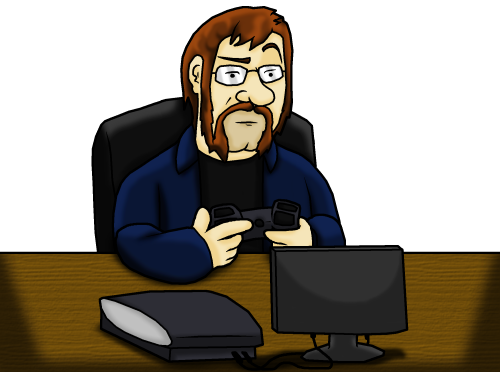James Bond Isn’t a Timelord
As a die-hard James Bond fan, one of the biggest struggles is coming to terms with one of the larger ever-present issues the franchise has: continuity.
If that’s a foreign word to you, it refers to how a work of fiction progresses as a whole. For example, Doctor Who has now been running for 50+ years and, aside from the odd retcon1, everything that has happened is “in continuity” with each new actor being a “new face” for the same character. One of the ways they maintain this is by having the Doctor’s adventures run parallel to the present day – most incarnations of the Doctor will, in-between planet and time-hopping, at some point touch “home base” in the present day. Christopher Eccleston and David Tennant would often pop back to the 2000s to visit Rose’s family, Matt Smith would return to 2010’s England for Amy Pond’s benefit and so on.

Continuity’s main adversary is time2. Works of fiction that take place over the course of years are subject to changes in society, technology, political correctness3 and so on, which can lead to continuity being a little bit patchy in places. The best example I can think of is in the Star Wars films – the original trilogy had lots of practical, bulky, colourless spaceships but the prequels indulged in using CGI to develop colourful, bizarre, often sleek “sports” ships. Similarly the light sabre fights became more elaborate for the “younger” versions of characters.
Bond’s continuity is an absolute mess. Seven very different actors from very different eras. Spy stories tend to reflect the politics and technology of the time, and this is very apparent in the Bond films. Most of the films revelled in the ever-present Cold War background threat of the Russians, so when the Cold War ended he was pitted against the modern media (Tomorrow Never Dies), Korea (Die Another Day) and corporations looking to privatise water (Quantum of Solace). Judi Dench’s M even playfully jokes that the world no longer needs Bond in GoldenEye by referring to him as a “a sexist, misogynist dinosaur – a relic of the Cold War”.
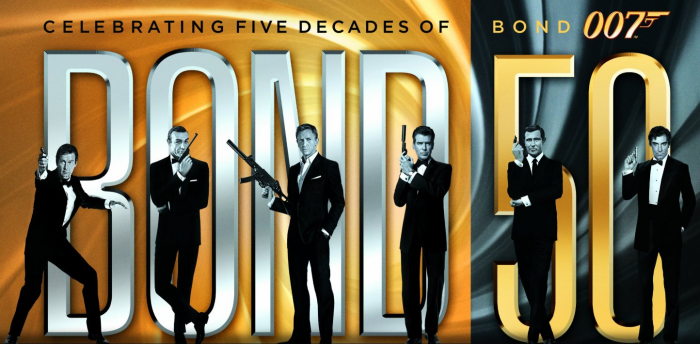
If James Bond is the same man in every film, he has lived from a era where mobile phones didn’t exist to an era where one constitutes 90% of his gadgets. He’s driven 60’s sports cars, blocky 80’s sports cars and modern, growling supercars. For this to work, the man would have to be about eighty now, if not older. You can suspend disbelief just enough to believe that it is the same character, even though angry Daniel Craig is far removed from Pierce Brosnan’s indifferent crooning, and both are nothing like the eyebrow-raising deadpan of Roger Moore.
I read this article on Tor.com recently that focused on one particular smoking gun of continuity issues, one I touched on a few years back in a recap of Casino Royale; that being the Aston Martin DB5 he won in a game of cards. The issue in particular being that the Aston Martin miraculously gains all the gadgets it was given in Goldfinger…which is where Bond was originally given the car in the first place (Q specifically refers to it as “your new car” and Connery’s Bond is visibly less than thrilled about his new vehicle).
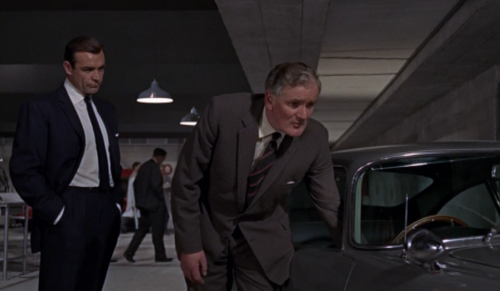
There are a few popular theories as to how Bond could work given the 50+ year time-frame:
- He’s a time lord, like in Doctor Who. It’s a joking explanation that accounts for the face and personality changes, and is hilariously underlined by the fact that Timothy Dalton once appeared in the modern Doctor Who as a senior time lord (and not a very nice one, either).
- “James Bond” is part of the codename given to every agent who takes on the 007 codename, which was actually posited in the non-canon slapstick farce Casino Royale4. This is supported by George Lazenby’s awful fourth-wall breaking reference to “this never happened to the other fellow” (in reference to Sean Connery) and the director of Die Another Day said that he believed this theory5. It works nicely given the opening of Casino Royale where Bond is clearly starting out in the 00-section of MI6, and the one film where Roger Moore visits Lazenby’s wife’s grave can be explained as “being a duty that’s part of the codename”6.
- All of these random guesses.
They are all wrong. I realised this recently because the people behind James Bond have explained how it actually works all along, via the video games. The real, actual explanation is that every James Bond is simply a Bond in a different, parallel universe to the others.
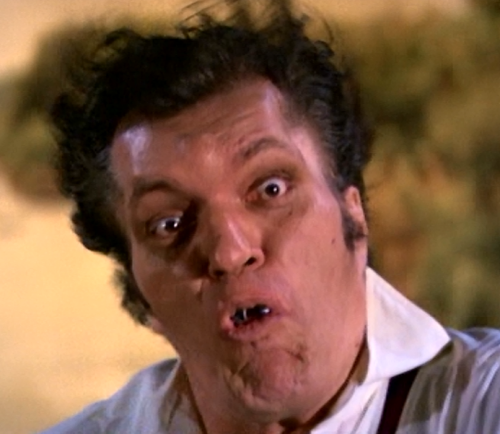
GoldenEye is a fondly-remembered video game that was on the Nintendo64 back in the day7. There was one game that capitalised on the name where you played one of Goldfinger’s henchmen with a bionic eye who went by the codename “GoldenEye” (it was really really stupid). More recently another GoldenEye was released for 7th generation consoles (PS3, Xbox, etc.) and it had an interesting twist in that all the main characters were played by different actors, and instead of Pierce Brosnan the Bond was Daniel Craig. It hit all the same notes as the original film but with entirely different faces speaking the lines. The tech had been updated a bit too, with modern smartphones replacing the slightly outdated 90’s “edgy” gadgets.

Following on from that was 007 Legends, which took place during the intro to Skyfall. In particular it takes place while Bond is drowning during the opening credits, as his life flashes before his eyes. You get to play five classic James Bond films, except you’re Daniel Craig. Most fascinatingly, the first mission is Goldfinger.
Goldfinger is no longer running a generic metalwork plant8, he’s now the head of an aircraft manufacturing facility. It’s odd seeing the characters of Goldfinger, Oddjob and Pussy Galore lifted from the 1960’s film and transplanted wholly into a modern environment. Suddenly Goldfinger is an eccentric millionaire, wearing outdated clothing of the gentry and being just slightly blind as to the political incorrectness of his manservant’s attire (given the ever-present modern Korean tensions). Mr. Ling and his extensive gang of trigger-happy overall-clad goons are no longer a third-party interested in destabilising the American economy by going along with Goldfinger’s plan, instead they are his (presumably underpaid and very cheap) workforce.
The weird thing is that it works and makes sense. Daniel Craig’s Bond did undertake the Goldfinger mission, except it didn’t take place in the 60’s – it took place in the 2000’s. He’s even directed via Judi Dench’s M9. The only sticking point is that he isn’t driving the DB5 in the game, instead using the modern Aston Martin equivalent. I guess the classic DB5 was still in storage? As for the DB5’s ejector seat in Skyfall, in Craig’s universe it might have been implemented on a completely different mission.
007 Legends presents re-imaginings of several classic Bond tales, updated for the modern era. Most of the villains are intact, with Toby Stephens returning as smuggest man in the world Gustav Graves and impressionists doing a fine job of mimicking the voices of other classic villains (Goldfinger included). Despite being plucked from various very different eras of Bond, all the missions seem plausible when re-purposed against a modern backdrop10.
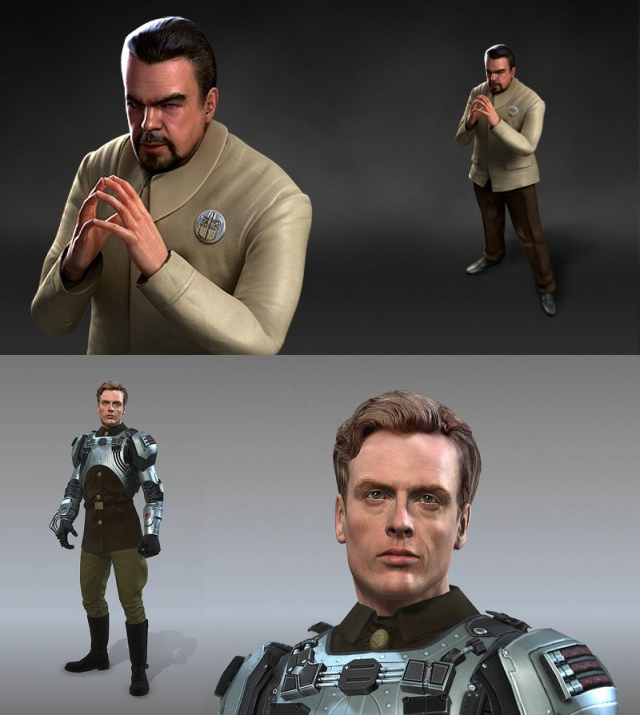
If 007 Legends isn’t convincing enough, previous Bond games support the idea. Brosnan’s Bond makes a reference to A View to a Kill’s Max Zorin in Everything or Nothing and went up against Zorin’s protégé (excellently played by Willem Dafoe). Agent Under Fire focused on a previously unseen James Bond, a sort of generic amalgam of other Bonds11.
Even the video game adaptation of From Russia with Love, which follows the original 1960’s era film and features Sean Connery as Bond, happens in what can only be a parallel universe. The film is a quiet, plodding thriller that takes its time whereas the video game, by contrast, fills every quiet moment with loud, obnoxious action that wouldn’t be out of place in an Arnold Schwarzenegger vehicle from the 80’s.
James Bond isn’t a timelord. James Bond isn’t a codename. James Bond is a person, and there are multiple Bonds, each in a different time, place and universe. Most of them have done the same missions and experienced similar things, albeit against the backdrops of their own time-line. Of course, this does allow for some alternative takes on certain films in the franchise…
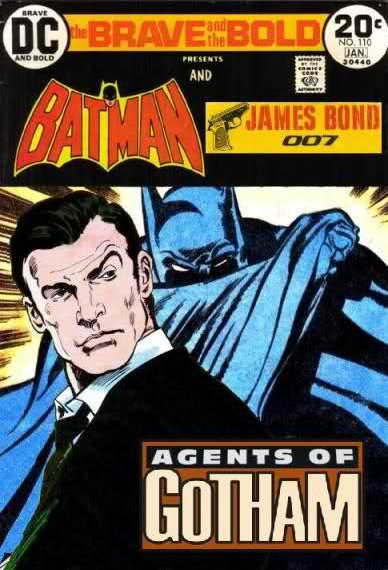
- “Retroactive continuity” is where a previously established fact is slightly tweaked or amended with new information, occasionally removed entirely. My favourite example is probably the death of Bruce Wayne’s parents; sometimes it was after seeing Zorro at the cinema, sometimes it was after seeing the Opera. Sometimes Joe Chill was the murderer, once or twice it was the Joker. There’s so many variations of what was said around the murders and what happened before/after that I’m beginning to suspect that Bruce Wayne himself has troubles remembering the event properly. ↩
- Ironic considering the previous example. ↩
- The Tintin film did an excellent job of skirting around the nice juicy racism in the source material. ↩
- The 1967 version, it’s truly one of the worst films of all time but is probably in my top 5 films just because it’s so bloody random. ↩
- Not that I’m going to let anyone involved with the creative process of Die Another Day convince me of anything. ↩
- I’d posit that Moore’s ladykiller Bond may have also seen Tracey before Lazenby’s Bond and might have had lingering romantic feelings towards her, the sly old devil. ↩
- Gamers old enough to remember having an N64 literally cannot shut up about it. ↩
- In the original novel “Enterprises Auric A.G.” makes metal furniture for aircraft. ↩
- Curiously the excellent Jeffrey Wright is absent from the role of Bond’s CIA buddy Felix Leiter, instead replaced by a generic white chap. I’m not one to play the racism card but Halle Berry’s role of Jynx in the Die Another Day chapter of 007 Legends has also been replaced with a noticeably more caucasian replacement. ↩
- Even the outlandish Moonraker (featuring yellow-clad henchmen, space travel and a seven-foot thug with metal teeth) doesn’t feel too out of place, which is pretty remarkable. ↩
- Generic Bond shares a universe with Brosnan as the spiritual sequel to Agent Under Fire, Nightfire, featured one of the AUF characters – CIA agent Zoe Nightshade. The protagonist of Nightfire was Brosnan’s Bond, not Generic Bond (although beta footage of AUF reveals it was originally supposed to feature licensed likenesses from the films). To top it off, Nightfire was basically a modern update of Moonraker – the villain was a bearded man who wanted to rule the world from space called “Drake” (not “Drax”). ↩
Post by Sean Patrick Payne+ | May 23, 2015 at 10:00 am | Films, James Bond, Video Games | No comment
Tags: 007, 007 Legends, Doctor Who, GoldenEye, Goldfinger, James Bond, That bloody Aston Martin DB5
